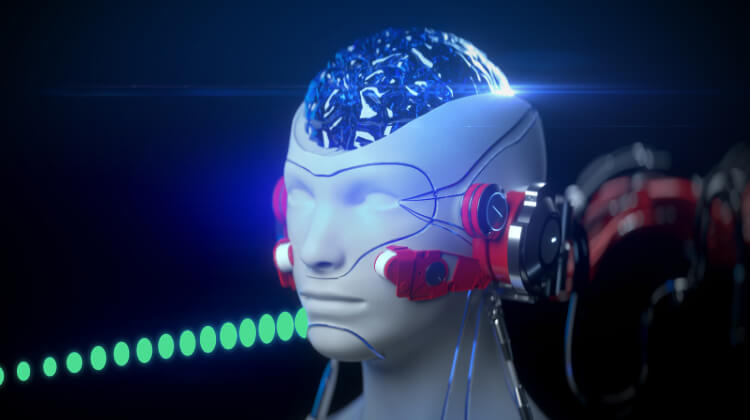How to Overcome 3 Common AI Development Obstacles

Artificial Intelligence, or AI, is everywhere. It helps healthcare providers interpret diagnostic imaging faster and more accurately. It’s behind the wheel of self-driving vehicles.
AI also performs less glamorous tasks, such as powering our chatbots, acting as virtual assistants, and guiding our robot vacuums as they sweep up after us.
Although it’s ubiquitous, AI is still challenging to create. Any software development company working to build AI tools must still overcome three common barriers to success.
First, you have to determine the use case for the AI you want to build and get your key stakeholders aligned on the AI’s goals.
And once your team is aligned, they’ll need high-quality data that meets regulatory standards. Then you must find the right people for the job.
Let’s look at each of these obstacles and how you can overcome them.
1. Determine Your Initial Use Cases
AI can do a lot. You may have several use cases for AI within your business. However, if you try to tackle them all at once—or start with the most challenging use case—you’re going to have problems.
Start small. Pick a simple AI application and let your team get some experience under their belt. It should still be an application your business can use, but don’t start with the most complex application. Your team will have an easier time tackling the more complicated AI projects once they have hands-on experience with the simpler tasks.
Determining which use cases to tackle first requires aligning all stakeholders on the project’s goal. Building an AI solution requires many participants, all with varying roles. On the one hand, this is good; diversity of experience and differing perspectives help make an AI implementation successful.
On the other hand, getting a diverse group of stakeholders to agree on the project’s goal may be a challenge. You may find that some stakeholders have a different view of what problems your AI should solve for the business. Without alignment, those views will continue to diverge as development progresses, having an increasingly negative impact on the project.
To get everyone aligned, gather all of the stakeholders at the outset and define the goals and success criteria for the project. Yes, it’s another meeting, and you may think it unnecessary, but aligning everyone on the project upfront can prevent a lot of headaches in the long run.
2. Make Sure You Have Quality Data
When it comes to building an AI, the old adage is particularly true: Garbage in, garbage out.
Anyone familiar with AI knows that 80 percent of the work involved with AI projects is data preparation. AI algorithms cannot perform well without high-quality data. And despite the tidal wave of data we generate these days, good data is hard to find.
How do you ensure data quality? AI experts rely on standard data quality techniques, such as data profiling, data preparation, data monitoring, and data quality evaluation.
A trained data science team should be able to perform these exercises accurately. If you don’t have data scientists on your team, however, you might need to outsource the work.
Once you’re satisfied with the data quality, you need to convert it into a format your AI can read. This process has its own set of challenges.
If you’re using data from highly regulated industries (banking or healthcare, for example), you need to ensure the data meets privacy standards. The data must be “sanitized” to remove any and all information that can connect the data with the originating individual—their bank account, their health records, their name and address, and so on.
On an international level, you need to take additional measures to adhere to the data-sharing laws of countries where the data originated.
In other words, you’re going to need to be very familiar with your industry’s complex regulatory landscape. If you don’t have someone with a deep level of knowledge on staff, you will need to either hire a consultant or outsource the work.
3. Assemble the Right Team
If it isn’t clear already, it takes more than the standard software development skillset to build an AI correctly. Unfortunately, most businesses don’t have developers on staff with AI experience.
That leaves you with two options: hiring the right personnel or outsourcing the work to a ready-made team.
Hiring might make sense if you plan to do more AI projects down the line, and you’ve got a few months to find and train an AI team.
If you don’t have time to hire and train a team, you can outsource the work to a custom software development company. Outsourcing not only gives you a ready-made team with deep AI experience, but also that team might be able to get the project completed on a tighter timeline.
The key to finding the right outsourcing partner is to look for a company that has built similar solutions in the past. If you want a complex AI-powered chatbot, for example, a team that has created one before will have a process in place, and they’ll know all the pitfalls to avoid.
Outsourcing to a skilled AI team can save an enormous amount of your time and funding. It also frees up your in-house development team to focus on their own work, rather than balancing day-to-day tasks with building an AI.
In addition, an experienced software development partner can help you pull together the necessary content to train your AI application.
Worth the Journey
It may be challenging to build an AI application, but it can deliver immense value to your business year after year.
If you start small, get your key stakeholders aligned on the AI’s initial use cases, use high-quality data, and get the right people for the job, you have a good chance of implementing your AI project successfully.
And if you find you need to outsource some or all of the work, give Taazaa a buzz. AI development can be challenging, and you may not have the knowledge in-house. When you need a team to support you, we’re here to help.

